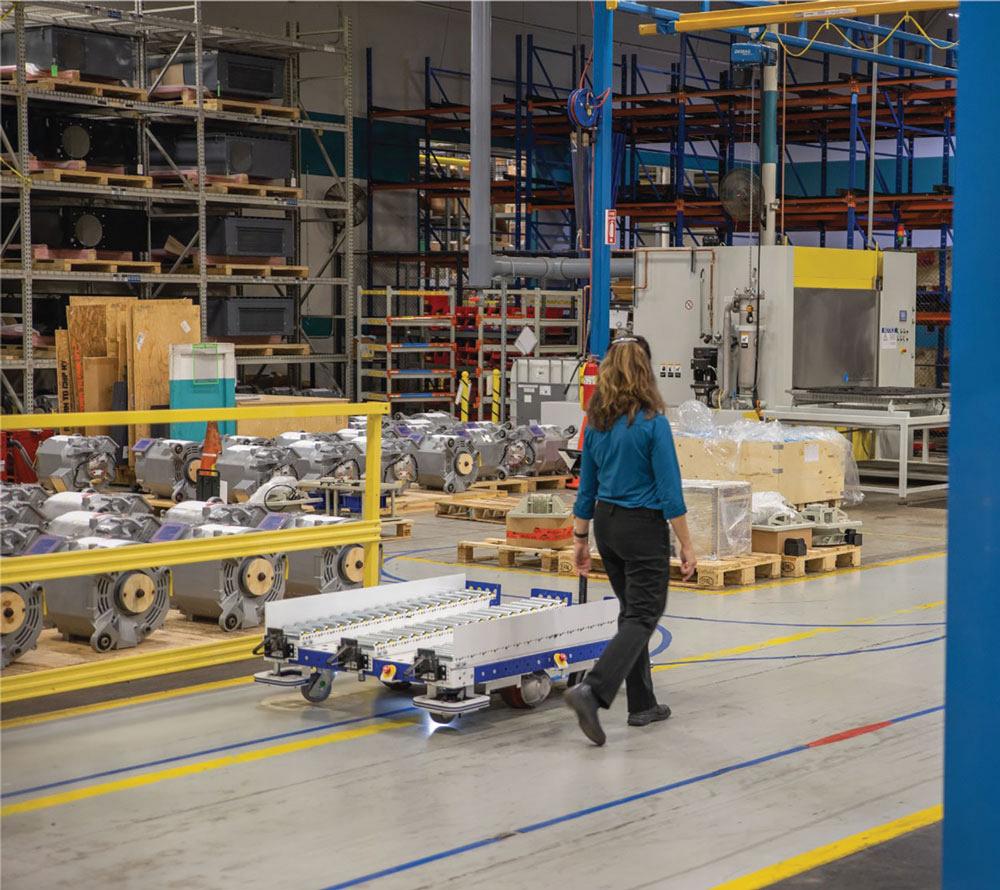Content Marketing Manager
- FMA
- The Fabricator
- FABTECH
- Canadian Metalworking
5 ways to tackle the skilled-labour challenge
Solving labour shortage on the production floor
- By Luke Goodwin
- January 5, 2022
The manufacturing industry requires many skilled employees to work effectively to meet current production demands. In addition, manufacturing companies constantly receive new orders as their businesses expand, putting even more pressure on the production floor.
However, there is an ongoing labour shortage because it has become difficult to find new talent, especially as older employees retire. Among others, these five actions can help ease this burden.
1. Sweeten Job Offers
To solve labour shortages on the production floor, attracting and retaining talent is key. Managers must come up with deliberate strategies to attract and retain employees.
Offering a good remuneration package is one of these strategies. To attract new talent, you should be ready to provide better compensation than your competitors. Not only will the better compensation attract new workers, but it will also prevent your existing talent from moving to your competitors.
Offering other benefits also helps attract and retain talent for your company. Such packages may include health insurance, paid time off such as vacation days, life insurance, and retirement benefits.
Working conditions also are critical to ensuring that you attract and retain talent. Keeping your employees safe is as essential as paying them well. Make sure you provide safety equipment for them, and provide the right tools and equipment to help them perform their duties to the best of their abilities.
Pros of sweetening job offers:
- Attracting and retaining the right talent becomes easier.
- Motivates employees to perform their duties well.
- Results in higher job satisfaction.
- Saves on the costs associated with recruitment.
Cons of sweetening job offers:
- Increases staff costs.
2. Invest in the Internet of Things
The Internet of Things (IoT) and smart manufacturing integrate technologies, including sensors, the cloud, and machine automation, with your machines and processes. Coupling these technologies allows for automatic data collection as well as real-time analysis and reporting.
As a result, IoT can assist workers in creating better capital equipment optimization, supply chain visibility, proactive maintenance, real-time monitoring, and safety. In addition, IoT can take on roles that employees would otherwise perform.
IoT also eliminates guesswork, leading to fewer errors and increased efficiency. Employees also can use modern technology on their devices, such as their tablets and smartphones.
IoT also plays a crucial role in a material handling system. You can use IoT to track material on the production floor and finished goods in the warehouse.
Pros of IoT:
- Enables easy access and fast communication. After setting up IoT, you only require a smart device and internet connectivity to get real-time data.
- Improves efficiencies. IoT improves efficiency by allowing data to be collected, analyzed, and communicated in electronic form.
Cons of IoT:
- Increases security and privacy costs and concerns. There is a risk of losing data being transmitted via IoT.
- Relies too much on technology. IoT increases dependency on technology, and as a result, a crash in an IoT infrastructure could be a catastrophe.
3. Install Collaborative Robots
Collaborative robots have replaced some human labour on the production floor, helping to solve some labour shortages. One significant feature of a collaborative robot is its ability to work alongside humans.
Collaborative robots, such as autonomous mobile robots (AMRs), are lightweight, compact, and flexible. They have safety features such as cameras and motion sensors, which improve their safety. In addition, AMRs’ technology enables them to change direction and avoid obstacles without the intervention of humans.
Automated guided vehicles (AGVs) are another form of robotic technology that assists in tackling labour shortages on the production floor. AGVs use a fixed path to move around the facility.
Both AMRs and AGVs have various applications on the production floor, but primarily they are used to carry materials and parts. Because AGVs use a fixed route integrated on the production floor, they can transport heavy materials safely. On the other hand, AMRs are lighter and more flexible and best-suited for applications such as picking and sorting.
Pros of collaborative robots:
- Installs easily. Collaborative robots are easy to assemble and disassemble.
- Moves easily. Flexible collaborative robots move quickly around the production floor.
Cons of collaborative robots:
- Complicates safety. A robot that can change its direction without human intervention can be risky.
- Limited by weight. Collaborative robots are not ideal for operations that require very heavy loads.
- Increases capital costs. The cost of installing and integrating collaborative robots can be high, but the right ROI can make this manageable.
4. Leverage Software
Using new or improved software helps you better manage processes, machines, and people. Many operations suffer from the inefficient deployment of workers, long idle times, delays in work order processing, frequent breakdowns, and lack of critical planning.
Software helps address these problems, ultimately solving labour shortages by streamlining processes. For example, a computerized maintenance management software streamlines maintenance tasks to help reduce unexpected downtime and schedule maintenance when the machine is not busy.
Up-to-date software helps businesses automate critical business activities better, such as inventory management, maintenance, and the running of production reports. The software sometimes eliminates the need to hire people to do these tasks.
Pros of adding software:
- Saves time. Software assists in scheduling tasks and organizing employees, hence saving time.
- Improves communication. The software acts as a communication tool for production scheduling and manufacturing planning.
Cons of adding software
- Costs money and implementation time. Implementing new software on the production floor can be costly.
- Increases job complexity. Production software is complex, and you need to get everything right in terms of materials, crew, and products to use it effectively.
5. Create Mentorship Programs
One way of dealing with labour shortages on the production floor is to understand the problem and deal with it early.
One of the best ways to manage talent is by creating training programs for new employees.
Mentorship programs coupled with on-the-job training is one of the most cost-efficient ways to build production talent. Such programs even can form part of your succession planning strategy.
Managers can create avenues and programs that encourage seasoned employees to train new ones. Furthermore, growing talent internally eliminates the need to search for talent from outside.
Managers should pair new employees with a mentor as soon as they come on-board. The mentor makes the new employee feel comfortable in the new working environment, and he or she can ask for assistance when the need arises. When employees feel comfortable in the workplace, they are more likely to stick with you.
Pros of mentorship programs:
- Reduces errors. Mentorships help prevent errors on the production floor because there is a second set of eyes on every problem.
- Transfers skills. Skills are transferred to the new employee quickly thanks to the experience of the mentor.
- Creates career paths. Mentorship can be used to enable faster promotions.
Cons of mentorship programs:
- Requires the right mentors. Bad mentors can pass their incompetence to new employees.
- Creates dependence. The new employee may end up entirely depending on the mentor for all decisions.
Luke Goodwin is content marketing manager for FlexQube, 317 Tucapau Rd., Duncan, S.C. 29334, 843-509-1624, sales@flexqube.com, www.flexqube.com.
subscribe now


Keep up to date with the latest news, events, and technology for all things metal from our pair of monthly magazines written specifically for Canadian manufacturers!
Start Your Free SubscriptionAbout the Author

- Industry Events
ZEISS Quality Innovation Days 2024
- April 15 - 19, 2024
Tube 2024
- April 15 - 19, 2024
- Düsseldorf, Germany
Lincoln Electric's Large Format 3D Metal Printing Seminar
- April 16 - 17, 2024
- Cleveland, OH
CTMA Economic Uncertainty: Helping You Navigate Windsor Seminar
- April 30, 2024
- Windsor, ON Canada
MME Winnipeg
- April 30, 2024
- Winnipeg, ON Canada





















